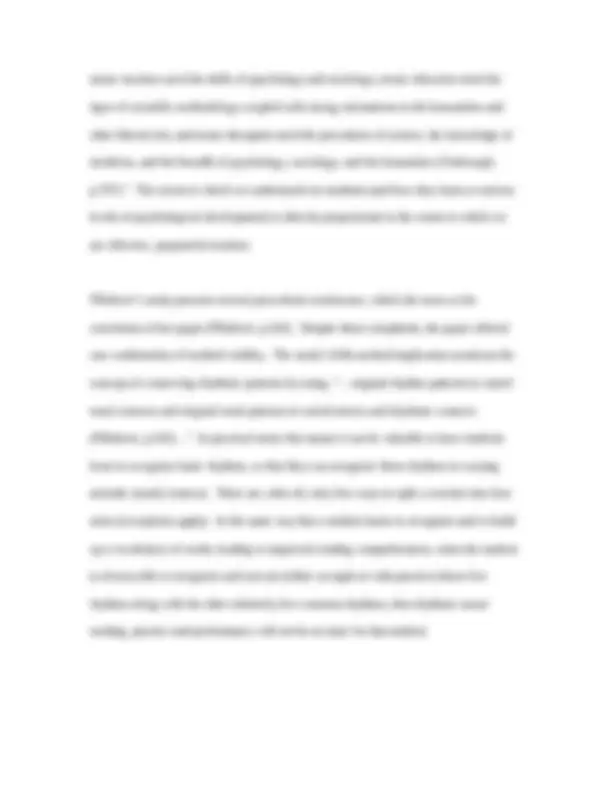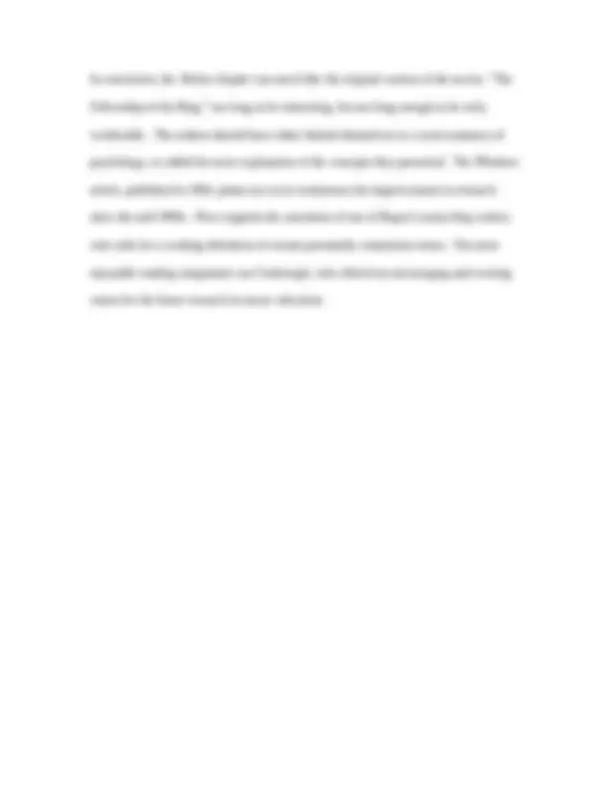




Study with the several resources on Docsity

Earn points by helping other students or get them with a premium plan


Prepare for your exams
Study with the several resources on Docsity

Earn points to download
Earn points by helping other students or get them with a premium plan
Community
Ask the community for help and clear up your study doubts
Discover the best universities in your country according to Docsity users
Free resources
Download our free guides on studying techniques, anxiety management strategies, and thesis advice from Docsity tutors
This reflective paper explores the importance of psychology as a foundation for curriculum and research in music education. The author discusses the historical incorporation of childhood development theory into music education and the need for curriculum specialists to understand psychological development for effective instruction. The document also highlights the need for interdisciplinary approaches in music research and education.
Typology: Papers
1 / 4

This page cannot be seen from the preview
Don't miss anything!



Reflective paper # Patrick Regan One of the most enjoyable aspects of the assigned textbook is the author’s ability to drop real gems of educational insight in their many long stretches of academic blarney. Just when it appears there is nothing of value to be gained from their academic blathering, they produce such incredible nuggets of wisdom as, “Adolescents can deal with abstractions and are no longer encumbered by a dependence on reality (Abeles, p.199). Speaking as the father of four teenagers, the words “adolescents” and “reality” should never be used in the same sentence. The most interesting aspect of this week’s readings was the presentation of the value of psychology as a foundation to curriculum and research practices. Throughout the readings references to the curricular and research ramifications of psychology abound. Childhood development theory (psychology) has been relatively recently incorporated into music education research and curriculum development, first appearing as a component in these fields in the early 1960s (Abeles, p.201). Yarbrough supports this contention, stating that “…music research as a discipline is a relatively recent development (Yarbrough, p.759)…” She contends that work in music education research, “…may be just beginning to have an impact on the training of young musicians and the musical education of our audience (Yarbrough, p.760).”.
Of great importance to curriculum specialists is the statement that, “…the sequencing of instructional material should be undertaken with an understanding of how children at various stages of development organize information (Abeles, p.194).” Furthermore, “… the curriculum designer should consider the style of instructional material so that it will be most effective for children who at different ages may process information in different ways (Abeles, p.194).” These statements exemplify the various author’s assertions that it would be very difficult for curriculum developers to adhere to such admonitions without an understanding of the psychological development of the student. Unfortunately, Abeles discussion of psychology as it relates to childhood development, especially Piagetian theory, is too briefly outlined to be understood thoroughly (at least in three attempts, by someone who last formally studied educational psychology 32 years ago), and this mist of comprehension is not adequately lifted by Pflederer, who states, “Conservation is the resultant of operational reversibility and implies what Piaget calls the ‘coordination of differences (p.228).’” Pflederer offers no working definition of “operational reversibility” or of “the coordination of differences.” Price’s idea of a working glossary of commonly used music research terms would be most appreciated in light of these readings. Rereading the passage three times helps, but gives no guarantee of definite understanding. While incomprehensibility is a definite weakness of both the Abeles chapter and the Pflederer article, it points out the need for a more in depth study in psychology. Yarbrough supports this thought in her call for an interdisciplinary approach to all types of scholarly and educational music. “Music historians need the techniques of anthropology and broad exposure to the humanities and liberal arts; applied
In conclusion, the Abeles chapter was much like the original version of the movie, “The Fellowship of the Ring;” too long to be interesting, but not long enough to be truly worthwhile. The authors should have either limited themselves to a scant summary of psychology, or added far more explanation of the concepts they presented. The Pflederer article, published in 1964, points out in its weaknesses the improvements in research since the mid 1960s. Price supports the assertions of one of Regan’s many blog entries, who calls for a working definition of certain potentially contentious terms. The most enjoyable reading assignment was Yarbrough, who offered an encouraging and exciting vision for the future research in music education.